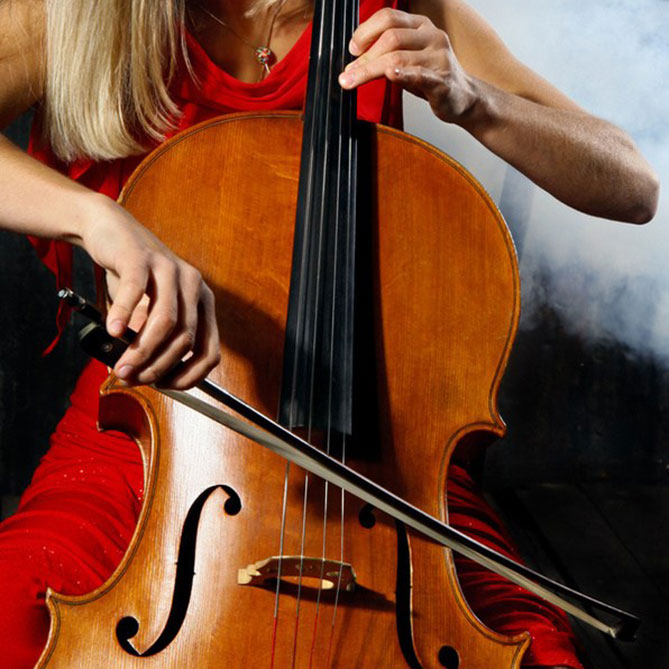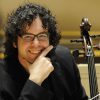
On How to Play the Baroque Cello: Vibrato (Part 1)
Guy Fishman
In my first blog entry I described a coaching I had gotten on the F major sonata by Brahms, during which I was told I sounded like a “baroque” cellist. I think this was because I disappointed her expectations as to what good cello sound should be, because I’m familiar with some of the excellent players in her circle and with how they play. More than anything else, I think it was my use of vibrato that gave her pause. I should say, however, that my playing at that time did not evince any provocative stance on this topic. But what vibrato I did apply to Brahms clearly did not near her idea of what is appropriate for romantic music.
In her defense, I concede that this idea is shared by most musicians I hear. My coach’s disappointment in my sound and her displeasure at my supposed perforation of Brahms with “baroque” tendencies were borne of a trend some 90 years in the making (and therefore both relatively new and, at the same time, old fashioned. What else do you do in your daily life that was de rigueur in the 1920s?). The trend, of course, is that of continuous vibrato as not only a rule, but as a fundamentally indispensable factor of good sound production. This flies in direct opposition to over 400 years of string-playing tradition, a period of time that includes in it the 100 or so years we call the “romantic” period. That we are producing a sound that would be generally unfamiliar to most nineteenth-century composers, including the arch-Romantics of the last quarter of the century, therefore presents a hurdle to anyone who takes the composer’s potential intentions into account when forming an interpretation of his or her work. This hurdle exists whether one is inclined towards historically-informed performance or not, especially since questions about appropriate vibrato use are not exclusive to so-called “early” music.
Vibrato has been a topic of interest to me since events transpired for me in a Tower Records, which I described in my second blog post. That interest has led to some research, and this has culminated in my doctoral dissertation, roughly half of which is a brief recounting of opinions on vibrato, recorded in texts starting in the 1540s and continuing through the 1990s. By that point, a hundred years of recordings evince the shifting trend from less vibrato in playing recorded roughly between 1890 and 1930, to what we are accustomed to today, starting around the 1920s. There are, of course, exceptions to both temporal ends of the previous statement, as this endeavor regards an element of Art whose existence is occasioned by but a wiggle of the finger or a lack thereof. At any rate, I have already presented the facts as I found them in my dissertation, and would like to make them available to you, here.
The multitudinous observations on vibrato, made by some of the most prominent tastemakers of the sixteenth through early-twentieth centuries, essentially distill into this: Vibrato is a wonderful, highly evocative, and endlessly expressive tool. It should be used judiciously, ornamentally, and occasionally, lest its emotive power be diminished by the ear’s familiarity with it. Were this to happen, an excess of this lovely device may render the music unnatural, and betray the musician as unskilled and lacking in refinement. This is attested to by the colorful and stinging epithets bestowed by the aforementioned tastemakers upon such offenders, who are accused of sounding like they are afflicted with palsy or paralysis, of playing like a dogs, ostriches, or circus performers, and of being artistically dishonest and malevolent.
By comparison, what some players in the twentieth century said about vibrato is no less than a 180-degree turn away from this line of thought. When writing about the emotive in violin playing, Carl Flesch robbed the bow of its prized role as the “soul” of the violin, which it had held for literally hundreds of years, and prescribed to it the execution of “dynamic differences” and “clearly defined, intellectually-controllable tasks.” Prior to this, the left hand’s role had been to cut a shorter string length and provide expressivity by only two means, portamento and the occasional vibrato. Now, in the 1920s, Flesch declared that the left hand was responsible for “… subliminally melding musical sounds with the deep feelings which subconsciously slumber in our souls,” thereby transmitting the “spiritual and emotional” in music. Shortly after that excursion to Tower Records, I began studying with David Soyer, who demanded that I avoid any “dead” notes in my playing from my very first lessons with him. He may not have known that he was quoting the violist Lionel Tertis, who warned the player to “KEEP THE FINGERS ALIVE! A phrase is spoilt by allowing them momentarily to go dead, i.e. by the cessation of the vibrato.” It seems that by the early twentieth century, vibrato had gained the ability to breathe life into music, and was being discussed in terms of mortality.
The above represents a general summation of the positions held by those in favor of ornamental vibrato and those who advocate continuous vibrato. In next week’s post, I’ll aim to temper both positions a bit, and provide some advice on the use of vibrato on baroque (and standard) cello, mostly in the form of some questions for us to ponder.
Subjects: Baroque, Historical
Tags: Baroque, CelloBlog, coaching, Flesch, Guy Fishman, Portamento, Soyer, Tertis, vibrato

